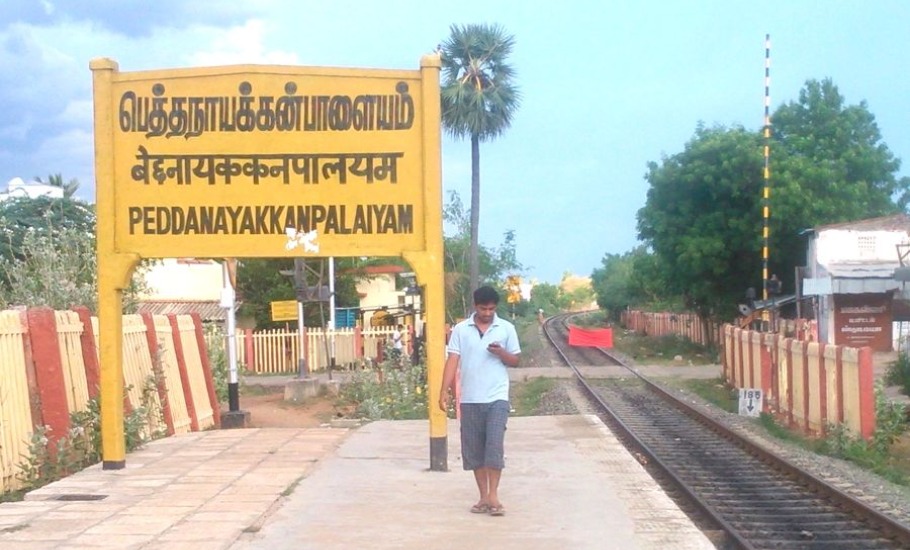
Changing place names in TN makes no difference until caste tags removed
Around 60 km away from Chennai lies Arunthathipuram, a hamlet in Tiruvallur district of Tamil Nadu. It was named after the Arunthathiyar, a Scheduled Caste community living there. A stone’s throw away from the hamlet are the settlements of the caste Hindus, who refer to it using a derogatory term.

Around 60 km from Chennai lies Arunthathipuram, a hamlet in Tiruvallur district of Tamil Nadu. It was named after the Arunthathiyars, a Scheduled Caste community living there. A stone’s throw away from them reside caste Hindus, who refer to the hamlet by a derogatory term.
There are hundreds of places in Tamil Nadu named after castes. Though successive state governments could remove caste surnames from many areas that were named after leaders, they couldn’t rename places having caste tags. For instance, GN Chetty Road in Chennai became GN Road, but Yadava Street remains the same.
Related news: Mayilaap‘poor’ transliteration by Tamil Nadu govt irks linguists
On June 10, the Tamil Nadu government came out with a new list of English transliteration of the names of 1,018 places in the state. Kavundarpalayam, named after the Gounder community, became Kavundarpaalayam with an extra ‘a’. Similarly, Chettipalayam, named after Chettiar, turned Settipaalayam.
This implies that the state could change only the spellings, but not remove the caste tags attached to the names of the places.
Language over caste
“Not just areas, even schools are named after castes. Aren’t they supposed to be secular?” asks Punitha Pandian, the editor of Dalit Murasu magazine. “Many people had moved the high court against the naming of schools after castes. But nothing changed,” he says, citing the example of Calavala Cunnan Chetty’s Higher Secondary School in Chennai’s Perambur.
As to why the state could not change caste names in schools and places, Pandian believes that the government could face opposition from groups representing those castes.
“However, it’s not impossible if the state is determined to do that,” he says, adding that every reform should begin with the abolition of caste.
“Both the DMK and the AIADMK had been taking various steps for the promotion of Tamil language. When in power, the DMK even asked the government officials to sign in Tamil. But they didn’t go beyond that. Even the present transliteration process is a move to divert people’s attention from the spike in COVID-19 cases in the state,” he says.
A comic continuation of colonialism
However, two changes in the government’s ‘renaming’ order seemed significant. One was the de-Sanskritisation of the names of a few places, like Srivilliputhur has become Thiruvillipuththur and Srirangam turned Thiruvarangam. Another is the replacement of the term ‘colony’ with the Tamil word kudiyiruppu (settlement).
In many villages in Tamil Nadu, ‘colony’ refers to the Dalit settlements within a village which is referred to by caste Hindus who call their own settlements as oor (village).
Related news: From schools to cracker shops casteism seems to be only spreading
However, the English word has a completely different meaning; it refers to a place where a group of people with a common interest or job reside together. For example: teachers’ colony or journalists’ colony. The word also denotes a country that is controlled politically by a more powerful nation. India was a British colony until we attained independence in 1947.
British colonialism had inspired the caste Hindus to consider themselves colonialists, says Pandian. “The word ‘colony’ denoted dominance when India was under British rule, and the caste Hindus wanted the Dalit settlements to be their colonies without even knowing the real meaning of the word,” he adds.
Later, the word became a derogatory term like another Tamil word ‘chery’, which actually means a place where people live together, but is referred to Dalit settlements in villages and slums in Chennai. “Even Velachery (an area in Chennai) and Pondicherry have the suffix ‘chery’. Will this stop people from buying homes there, asks Pandian.
A long history
The renaming of places in Tamil Nadu was not a simple process like the way the state government handled it this time, says S Anandhi, professor, Madras Institute of Development Studies, Chennai. “There are records of how the renaming process was done in the past. Several groups had petitioned the state for a name change and there were resistances too,” she says.
Tamil Nadu has witnessed several agitations by caste groups over the demand to rename districts, places and transport corporations after their leaders. In 1997, the then Pandiyan Roadways Corporation Limited (now the Madurai Division of the Tamil Nadu State Transport Corporation) was split to form a transport body, named after Veeran Sundaralingam, a leader of the Pallar community.
Related news: Buried tales of Dalit discrimination in Tamil Nadu village
However, some members of the Thevar community opposed the decision, which led to violence in the region. Later, the DMK government decided to change the names of the transport body and also that of the districts that had been named after leaders.
“All these decisions were made after proper discussions in the legislative assembly,” says Anandhi, slamming the incumbent government’s name change process, done without any debate.
When people are suffering without food and income, why will they care about renaming of places, she asks. “Even the Dalits living in Kavundampalayam (a well-known area in Coimbatore) will now be concerned about food and jobs, rather than their area carrying a caste tag,” she says.


